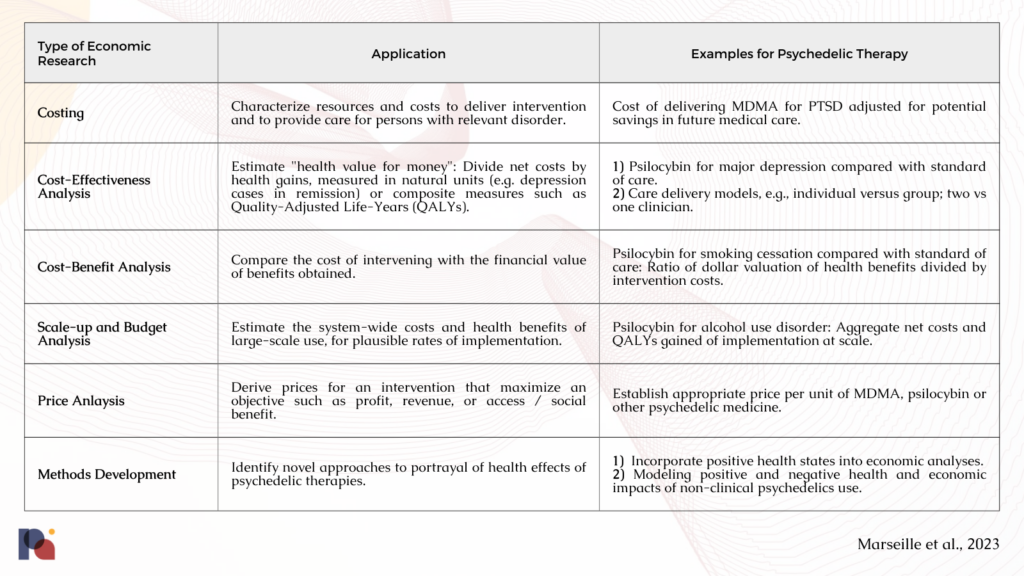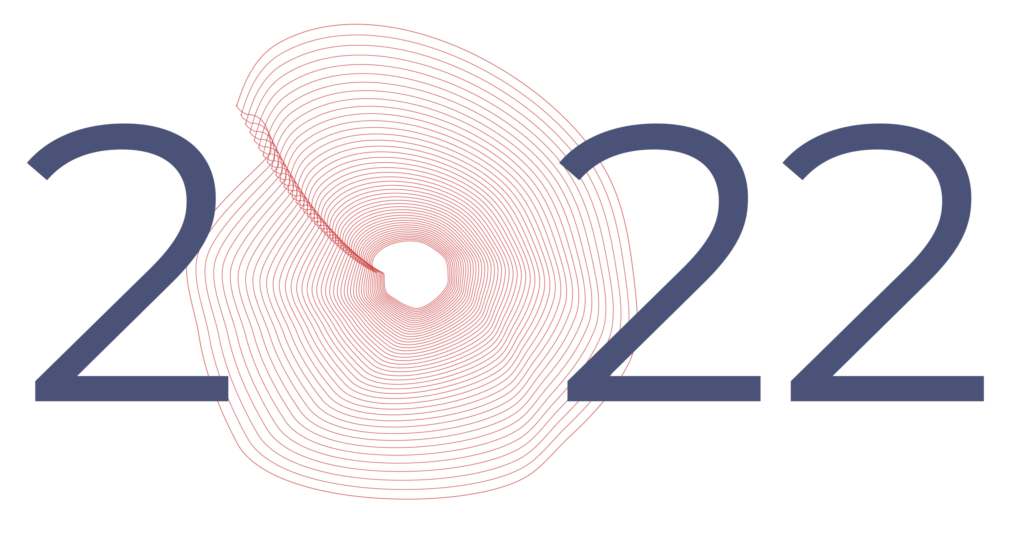The Agenda for Economic Analyses of Psychedelic-assisted Therapy

Elliot Marseille, Stefano Bertozzi, James G. Kahn
Global Initiative for Psychedelic Science Economics (GIPSE)
Part of our Year in Review series
Elliot Marseille DrPH, MPP, Stefano Bertozzi, MD, PhD, and James G. Kahn, MD, MPH are seeking to apply policy-relevant economic analyses to the pursuit of achieving the apparent potential of psychedelic therapies for mental health conditions. Their efforts in this realm are broadly housed within the Global Initiative for Psychedelic Science Economics (GIPSE).
Here, Marseille, Bertozzi, and Kahn present an agenda for research into economic considerations surrounding the resurgence of interest in psychedelics.
Psychiatry is undergoing a resurgence of interest in psychedelics to treat a range of disorders. Research has lagged on economic considerations, yet these issues are critical if psychedelic therapies are to become widely accessible. We describe six types of relevant economic analyses, the rationale for each; and outline desirable features of this research such as scientific rigor, and a global view. Each is described below and in Table 1. How these methods relate to, and reinforce one another is shown in Figure 1.


Types of economic analyses relevant to psychedelic therapies
Cost analyses. A detailed understanding of the cost of delivering psychedelic therapies is indispensable if private and public providers are to provide them on a sustainable basis. Evidence-based cost data is also needed as stakeholders negotiate service codes and reimbursement rates. Finally, cost data are a foundation for three other types of economic analyses discussed below – cost-effectiveness, cost-benefit and “scale-up” analyses.
Cost-effectiveness analysis (CEA) is a frequently-used tool to assess program or policy choices that considers both costs and health benefits. As with any new health technology, psychedelic therapies will need credible cost-effectiveness analyses if they are to become mainstream (Hjelmgren et al., 2001; Hoffmann & Graf von der Schulenburg, 2000). At a minimum, CEAs of psychedelic therapies (Marseille et al., 2022) should be conducted from the perspective of health care payers, as they are the gatekeepers of access. Whenever possible, they should also quantify broader societal benefits such as increases in productivity (Sanders et al., 2016). Such societal analyses can build political acceptance for the clinical use of these formerly illegal and stigmatized drugs.
Cost-benefit analysis (CBA) is another powerful tool for estimating “value for money. In CBA, both health and non-health outcomes are valued in monetary terms. The choice between CEA or CBA for any given analysis depends on the policy question. If it pertains to a broad set of options, including outcomes beyond health, CBA is more flexible and robust.
Scale-up and budget impact analysis. Scale-up and budget impact analyses portray the likely trajectory over time of increased access to treatment, the cost of serving those patients, potential net savings in reduced medical care costs, and associated health care benefits (Avancena et al., 2022). By quantifying broad public health and economic impact, they can also help make the case to NIH to fund high-quality research, and to state legislatures and health departments to facilitate access to newly legal therapies.
Price evaluation. Appropriate pricing is crucial for patient access, payer adoption, and revenue generation. There are various methods for setting the price of new pharmaceuticals. In many ways, the successful introduction of psychedelic therapies is similar to the rollout of conventional medical therapies. However, an important difference arises from the history of prohibition: Market models for legal psychedelic medicines must account for potential downward pressures on price exerted by well-entrenched informal markets for psychedelic materials.
Organizations which have adopted public-benefit models for the sale of psychedelics must balance two competing goals: Lower price means greater access to treatment and greater public health benefit. However, lower price also means less revenue to direct back to non-profit research and education. If public benefit actors are concerned with identifying the welfare- maximizing price, rather than the profit-maximizing price, this is a calculation with greater uncertainties.
Yet another application of price evaluation follows the implementation of Oregon’s Propositions 109 and 110 and similar legislation to follow in Colorado and elsewhere (Oregon Health Authority, 2022). We anticipate a large demand for financial analysis to help establish a viable price for clinical and non-clinic psychedelic services in a competitive environment.
Methods development. Current tools of health economic evaluation cannot assess certain issues that arise for psychedelic therapies. For example, the traditional concept of health state “utility”, roughly equivalent to “satisfaction” (British Medical Journal, 2022, may underestimate the benefits of psychedelic therapies, since it does not reflect greater access to sustained positive states of well-being reported by many people following exposure to psychedelics. The methodological problem of developing a validated measure of well-being that integrates traditional health-state utility with other measures of well-being that include positive emotional and cognitive states, has not been solved. To do so, health economists should seek cross-disciplinary collaboration with psychologists, “happiness researchers”, and psychometric experts.
Principles to guide the health economics research program for psychedelics.
We believe that the potentially transformative effects of psychedelics in mental health treatment warrant a proactive economics research agenda. We propose the following characteristics:
Forward-looking / anticipatory. Typically, attention turns to economic analyses only after promising results from clinical trials. We advocate a middle ground between premature economic analysis and delaying work until definitive clinical results are available. In addition to more rapid dissemination of important economic findings, by establishing early collaboration with clinical researchers, appropriate economic data collection instruments and methods can sometimes be woven into the design of the clinical research.
Equity. Economic research on psychedelics should regularly consider equity issues such as the gap between the need for mental health treatment and access to psychedelic interventions; and how this gap is affected by economic status. To avoid outcomes in which those most in need have the least access, devising reimbursement plans that guarantee equitable access should be high on the agenda.
Global scope. Clinical trials of psychedelic therapies have been conducted in the USA, Europe, Australia, New Zealand and Israel, yet 84.3% of people affected by mental illness live in low and middle-income countries (Steel et al., 2014), (World Bank Open Data 2020). It is not clear that western-style psychedelic therapeutic modalities will be appropriate or effective in all cultural contexts. In partnership with experts in host countries, models for psychedelic therapies developed for rich countries may need to be revised or re-thought altogether for low- and middle-income income countries.
Teaching, mentoring, and partnerships. To ensure the emergence of a cadre of researchers prepared to advance this agenda, health economists should develop courses on economics and implementation science for psychedelic therapies. Through partnerships with leading researchers and institutions overseas, economists in well-resourced countries can support an appropriate psychedelics-related research agenda in middle- and low-income countries.
Scientific rigor. The last few years have seen a rapid influx of private sector research dollars into the psychedelic space. In this environment, marketing hype could supplant evidence-based practice. Stakeholders need a countervailing body of economic analyses with a minimum of conflicts of interest, and a commitment to Open Science (Petranker et al., 2020). There will be an ongoing role for NIH, other government funding, and philanthropic assistance for arms-length support to leading researchers.
Conclusion
Results from clinical trials of psychedelic therapies suggest that psychiatry may soon have an expanded range of effective treatments. Research on the economics of these emerging therapies is now imperative. Among priority areas for economic analyses are cost-effectiveness and cost-benefit analyses that assess value for money to payers and society at large; scale-up models that portray the cumulative impact of access to psychedelic therapies; and price and market analyses that health care providers and payers need to plan the delivery of care.
Cite This Article
APA
Chicago
Harvard
MLA
APA
Marseille, E., Bertozzi, S., & Kahn, J. G. (2023, February 1). The Agenda for Economic Analyses of Psychedelic-assisted Therapy – Psychedelic Alpha. Psychedelic Alpha. https://psychedelicalpha.com/news/the-agenda-for-economic-analyses-of-psychedelic-assisted-therapy
Chicago
Marseille, Elliot, Stefano Bertozzi, and James G. Kahn. “The Agenda for Economic Analyses of Psychedelic-assisted Therapy – Psychedelic Alpha.” Psychedelic Alpha, February 1, 2023. https://psychedelicalpha.com/news/the-agenda-for-economic-analyses-of-psychedelic-assisted-therapy.
Harvard
Marseille, E., Bertozzi, S. and Kahn, J. G., (2023). The Agenda for Economic Analyses of Psychedelic-assisted Therapy – Psychedelic Alpha [online]. Psychedelic Alpha. Available from: https://psychedelicalpha.com/news/the-agenda-for-economic-analyses-of-psychedelic-assisted-therapy
MLA
Marseille, Elliot, et al. “The Agenda for Economic Analyses of Psychedelic-assisted Therapy – Psychedelic Alpha.” Psychedelic Alpha, 1 Feb. 2023, psychedelicalpha.com/news/the-agenda-for-economic-analyses-of-psychedelic-assisted-therapy.
Part of our Year in Review series
This content is part of our 2022 Year in Review, which looks back at the past year through commentary and analysis, interviews and guest contributions.
Receive New Sections in Your Inbox
To receive future sections of the Review in your inbox, join our newsletter…


